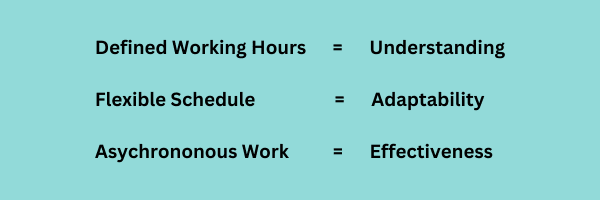Published in Advice

Ethan Wilson
Civil Engineer / Project Manager
September 29, 2024
Stop Wasting Time and Money: How to Hire a Virtual Assistant; A Guide for Project Managers
Project managers are overwhelmed and short of time. Virtual assistants may be the answer they need. Unlock the power of virtual assistants for project management. Learn how to hire, onboard, and collaborate with VAs effectively in this comprehensive guide. Learn the best strategies and how to avoid potential difficulties. Optimize your project's efficiency and productivity with virtual assistants.
Project managers are overwhelmed. They have vast responsibilities and too little time to spend on important project tasks. However at the same time, project budgets are limited and the opportunities to hire full-time administrative support are often non-existent. The advent of virtual assistants (VAs) is a game-changer in this difficult situation. VAs can help project managers streamline tasks, boost productivity, and manage workloads more effectively. This guide will walk you through the process of hiring and integrating a virtual assistant into your project management team.
Introduction: The Role of Virtual Assistants in Project Management
In recent years, the role of virtual assistants in project management has grown significantly. With advancements in technology and the increasing trend toward remote work, hiring a virtual assistant can be a smart move for project managers seeking to optimize their operations. This guide aims to help project managers understand the key considerations and steps involved in bringing a virtual assistant on board.
Understanding Your Project Needs
1. Define Your Project's Objectives and Scope
Before starting the journey to hire a virtual assistant, it's crucial to have a clear understanding of your project's objectives and scope. This entails defining the project's goals, the specific tasks required to achieve those goals, and the timeline for completion. By outlining these aspects, you can identify where a virtual assistant can contribute most effectively.
2. Identify Specific Tasks and Responsibilities
After defining the project's scope, identify the specific tasks and responsibilities that a virtual assistant can take on. These can include tasks such as broad administrative functions, data entry, research or scheduling, to more specialised roles like social media management or content creation. Pinpointing these tasks is essential for a successful VA partnership.
3. Determine Qualifications and Skills Required
Depending on the tasks at hand, you'll need to determine the qualifications and skills necessary for your virtual assistant. Are you looking for someone with strong administrative skills, digital marketing expertise, or a combination of both? Is there a requirement to have a particular qualification or certification? Are there legal requirements in your industry? A clear understanding of your requirements will simplify the hiring process.
Finding the Right Virtual Assistant
1. Freelance VA vs. VA Agency
One of the initial decisions you'll need to make is whether to hire a freelance virtual assistant or work with a VA agency. Freelancers often offer flexibility and cost-effectiveness, while agencies can provide a broader range of services and reliability. Choose the option that aligns with your project's needs and budget.
2. Explore Recruitment Platforms
Various online platforms can help you find virtual assistants. Popular options include Upwork, Fiverr, and specialized VA agencies. These platforms allow you to search for candidates based on skills, experience, and ratings from previous clients.
3. Create a Comprehensive Job Description
Craft a detailed job description that outlines the project, tasks, qualifications necessary, and expectations of management. The more precise your job description, the more likely you are to attract candidates who match your requirements.
4. Filter and Shortlist Candidates
As applications start coming in, filter and shortlist candidates based on their qualifications, experience, and responses to your job description. Narrow down your list to a handful of potential candidates for further evaluation.
Evaluating Virtual Assistant Candidates
1. Conduct Interviews and Assessments
Set up interviews with your shortlisted candidates. During these interviews, ask about their experience, their approach to tasks, and their problem-solving abilities. Assess their communication skills, as clear communication is vital for remote work success. Also ask questions related to working hours and time-zones. Remembers that VA’s might be located all over the globe.
2. Review Portfolios, Resumes, and References
Request portfolios or samples of their work, and check their references. This will give you insights into their past performance and the quality of their work.
3. Assess Cultural Fit and Communication Skills
Cultural fit is often overlooked but crucial. A virtual assistant should align with your project's values and work ethic. Additionally, assess their communication skills and responsiveness, as you'll need to collaborate effectively despite physical distance.
4. Test Technical Proficiency
If your project involves specific software or tools, it's a good idea to test your candidates' proficiency. This can be done through skills assessments or trial tasks.
Onboarding and Training
1. Develop an Onboarding Plan
After selecting the right candidate, create a comprehensive onboarding plan. This should include a structured introduction to your project, team, and processes. Remember that the onboarding process should allow the VA to get familiar with the work required. The output from the VA may not be optimal during this time of training.
2. Set Clear Expectations and Goals
Clearly define the expectations and goals for your virtual assistant. Make sure they understand their role in the project and how their work contributes to the overall success. Expectations around speed of delivery and time of availability should also be set. Confidentiality requirements should also be clearly stated.
3. Provide Access to Necessary Tools and Software
Ensure your virtual assistant has access to all the tools and software required to perform their tasks efficiently. This might include project management tools, communication platforms, or specific software applications. If your project team reports to a corporate entity, make sure that the IT department is well informed of requirements.
4. Train on Project Management Processes
If your project follows specific project management processes, take the time to train your virtual assistant on these procedures. This will ensure they integrate seamlessly into your team.
Communication and Collaboration
1. Set Up Communication Channels and Tools
Establish a reliable and efficient communication system. This includes using tools like email, instant messaging, video conferencing, and project management software to stay connected.
2. Establish a Regular Meeting Schedule
Set up a consistent schedule for meetings and updates. Regular communication is essential to keep everyone aligned and informed.
3. Define Reporting and Feedback Mechanisms
Clearly define how your virtual assistant should report progress and submit completed tasks. Regular feedback sessions are crucial for continuous improvement.
4. Encourage Open and Effective Communication
Foster an environment where open communication is encouraged. Make sure your virtual assistant feels comfortable asking questions and seeking clarification when needed.
Monitoring Performance
1. Establish Key Performance Indicators (KPIs)
Define key performance indicators (KPIs) to measure the performance of your virtual assistant. These should align with the tasks and responsibilities you assigned. These must be agreed with the VA. Ideally this should be agreed before employment or as soon as possible thereafter.
2. Regularly Review the Virtual Assistant's Work
Consistently review the work of your virtual assistant. This ensures that tasks are being completed satisfactorily and on schedule. Give honest, constructive and consistent feedback and ask their input and opinion on what is working, or not working.
3. Address Performance Issues Promptly
If performance issues arise, address them promptly. Open communication and early intervention are essential to maintaining productivity and a positive working relationship.
Data Security and Confidentiality
1. Discuss Data Security Protocols
If your project involves sensitive data, discuss data security protocols with your virtual assistant. Ensure they understand the importance of data privacy.
2. Implement Confidentiality Agreements
Consider implementing confidentiality agreements to protect sensitive information and intellectual property.
3. Ensure Compliance with Regulations
If your project is subject to industry-specific regulations, make sure your virtual assistant complies with all relevant rules and requirements.
Managing Time Zones and Schedules
1. Address Time Zone Differences
Time zone differences can be a challenge, but they can also be an advantage. Define working hours that accommodate both parties and use time zone management tools to stay organized. Asynchronous work is when your VA completes their tasks at different times to the rest of the project team. This might be ideal if time zones are very different.
2. Create a Flexible Schedule
Create a flexible schedule that allows your virtual assistant to adapt to unexpected changes while ensuring they meet their commitments.
3. Utilise Time Zone Management Tools
Numerous time zone management tools are available to help you and your virtual assistant coordinate work across different time zones. Some popular options include World Time Buddy and TimeAndDate.com. Other project management software can also be used to manage tasks and setup meetings in different time zones.

Scaling Up or Down
1. Adjust Workloads as Needed
As your project evolves, you may need to adjust the workload of your virtual assistant. Be prepared to assign additional tasks or reduce responsibilities as required.
2. Hire Additional Virtual Assistants
If your project workload increases, you may consider hiring additional virtual assistants to help distribute the tasks effectively.
3. Manage Workloads Effectively
Balancing workloads among multiple virtual assistants requires effective management. Ensure that tasks are distributed evenly and that each assistant's role is clearly defined.
Handling Challenges and Conflicts
1. Identify Common Challenges
Recognise common challenges in virtual assistant relationships, such as miscommunication, missed deadlines, and cultural differences. Being aware of these issues is the first step in addressing them. Doing a risk analysis on the VA role may be a useful exercise if the project team intends to use virtual assistants in the long term.
2. Resolve Conflicts and Misunderstandings
When conflicts arise, address them promptly and constructively. Open, honest, and respectful communication is key to resolving misunderstandings and maintaining a positive working relationship.
3. Nurturing a Positive and Collaborative Working Environment
Foster a positive and collaborative working environment by celebrating achievements, providing positive feedback, and maintaining a sense of team spirit, even in a remote work setting.
Conclusion: The Value of Virtual Assistants in Project Management
Incorporating a virtual assistant into your project management team can significantly enhance productivity, streamline tasks, and create more efficient workflows. By following the steps outlined in this guide, you can navigate the process of hiring and integrating a virtual assistant with confidence and success.
Additional Resources
Recommended Tools and Software for Virtual Assistant Management
Project management tools: Trello, Asana, Monday.com
Communication tools: Slack, Microsoft Teams, Zoom
Time zone management tools: World Time Buddy, TimeAndDate.com
Collaboration platforms: Google Workspace, Microsoft Office 365
Further Reading and Sources for Project Managers
"Remote: Office Not Required" by Jason Fried and David Heinemeier Hansson
"Virtual Freedom: How to Work with Virtual Staff to Buy More Time, Become More Productive, and Build Your Dream Business" by Chris Ducker
"The 4-Hour Workweek" by Timothy Ferriss
As a project manager, embracing the potential of virtual assistants can be a transformative move for your projects. By following this comprehensive guide, you'll be well-equipped to navigate the hiring process, integrate a virtual assistant into your team, and reap the benefits of enhanced project management efficiency.


